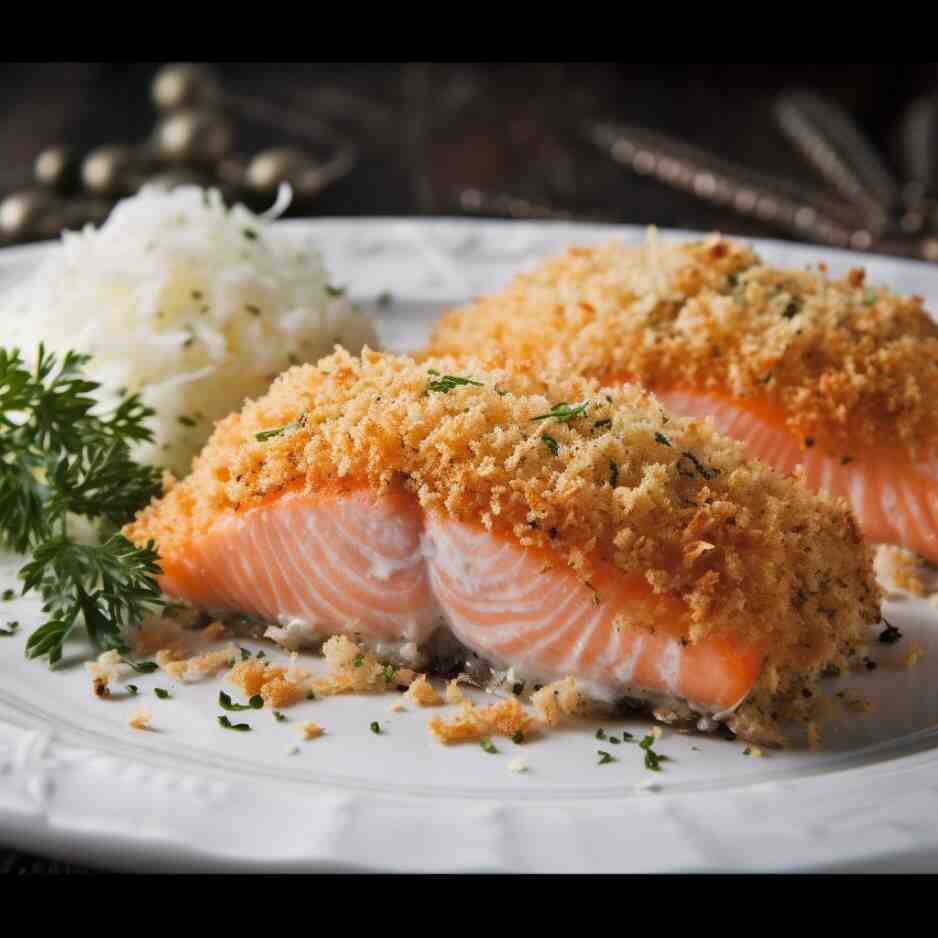Recommended Internal Temperature: 145°F (63°C)
Nail that Salmon, Every Time!
Hey there, fellow food enthusiasts! If you’ve ever faced the dreaded dry and chewy salmon situation, worry not. We’ve got your back with the ultimate Baked Salmon Temperature Guide that’s all about keeping your salmon juicy and mouthwatering.
What is salmon?
Salmon is a widely enjoyed fish known for its particular taste and high concentration of omega-3 fatty acids, which are beneficial for human health. When preparing salmon, it’s vital to ensure proper cooking techniques for optimal flavor and to maintain food safety standards. Achieving the correct internal temperature is a key element in the process of cooking salmon to perfection. This temperature control ensures that the fish is both safe to eat and retains its desired texture and taste.
SUMMARY
- What is the ideal internal temperature of salmon?
- What if the salmon is overcooked?
- What if the salmon is undercooked?
- How to cook salmon to the perfect internal temperature
- Other cooking methods for salmon
- Safety considerations for cooking salmon
What is the ideal internal temperature of salmon?
Whether you’re grilling, baking, pan-searing, or poaching salmon, understanding and monitoring the internal temperature is essential. Cooking recommendations may vary slightly depending on the method you choose and personal preferences, but a general guideline is to aim for an internal temperature of around 145°F (63°C) at the thickest part of the salmon. This temperature ensures that harmful bacteria are killed, making the fish safe to consume, while still maintaining its desirable moisture and flavor.
What if the salmon is overcooked?
If salmon is overcooked, it can result in a dry and less flavorful texture. Overcooking can cause the fish to become tough and lose its natural moisture, making it less enjoyable to eat. The delicate oils and fats, including the beneficial omega-3 fatty acids, can also break down during excessive cooking, diminishing the nutritional value and taste of the fish. To avoid overcooked salmon, it’s important to monitor the cooking time and internal temperature carefully, aiming to remove the fish from heat just as it reaches the recommended temperature, usually around 145°F (63°C) at the thickest part.
What if the salmon is undercooked?
If salmon is undercooked, it may pose risks to your health. Undercooked salmon can contain harmful bacteria such as salmonella or parasites that can lead to foodborne illnesses. Symptoms of consuming undercooked salmon may include nausea, vomiting, diarrhea, abdominal pain, and fever. To ensure the salmon is safe to eat, it’s crucial to reach the recommended internal temperature of around 145°F (63°C) at the thickest part of the fish. Proper cooking not only ensures food safety but also preserves the desired texture and flavor of the salmon. If you suspect that you’ve consumed undercooked salmon and experience any symptoms of food poisoning, it’s advisable to seek medical attention.
How to cook salmon to the perfect internal temperature
Stir-fried
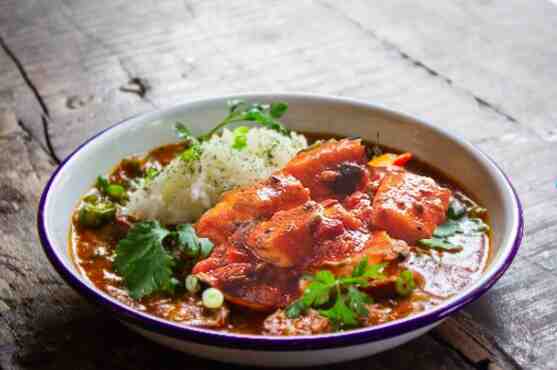
To cook salmon to the perfect internal temperature, follow these steps:
- Choose Fresh Salmon: Start with fresh salmon fillets or steaks. Look for firm, moist fish with a pleasant smell.
- Prep and Season: Pat the salmon dry with a paper towel to promote even cooking. Season the salmon with your choice of herbs, spices, and marinades.
- Preheat the Pan or Oven: Preheat your cooking surface, whether it’s a pan, grill, or oven, to the desired temperature. For most methods, a medium-high heat works well.
- Use a Cooking Thermometer: Invest in a reliable cooking thermometer to accurately measure the internal temperature of the salmon. Insert the thermometer probe into the thickest part of the fish without touching the bone or pan.
- Cook Time: The cooking time will vary based on the thickness of the salmon and the cooking method you’re using. As a general guideline, aim for about 4-6 minutes per half-inch (1.27 cm) of thickness. Keep a close eye on the salmon to prevent overcooking.
- Monitor the Temperature: Watch the thermometer as the salmon cooks. The target internal temperature is around 145°F (63°C). At this temperature, the salmon is safe to eat and retains its moisture.
- Test for Doneness: To test doneness without a thermometer, you can gently insert a fork into the thickest part of the salmon and twist. If the fish flakes easily and appears opaque throughout, it’s likely done.
- Resting Time: Remove the salmon from the heat just before it reaches the target temperature, as it will continue to cook slightly while resting. Let the salmon rest for a few minutes before serving. During this time, the residual heat will help redistribute juices and keep the fish moist.
- Serve and Enjoy: Once the salmon has rested, serve it immediately. The salmon should be tender, flaky, and flavorful.
By using a cooking thermometer and paying close attention to the internal temperature, you can ensure that your salmon is cooked perfectly, both safe to eat and retaining its desired texture and taste. Remember that practice makes perfect, and with experience, you’ll become adept at achieving the ideal internal temperature for your preferred level of doneness.
Baked
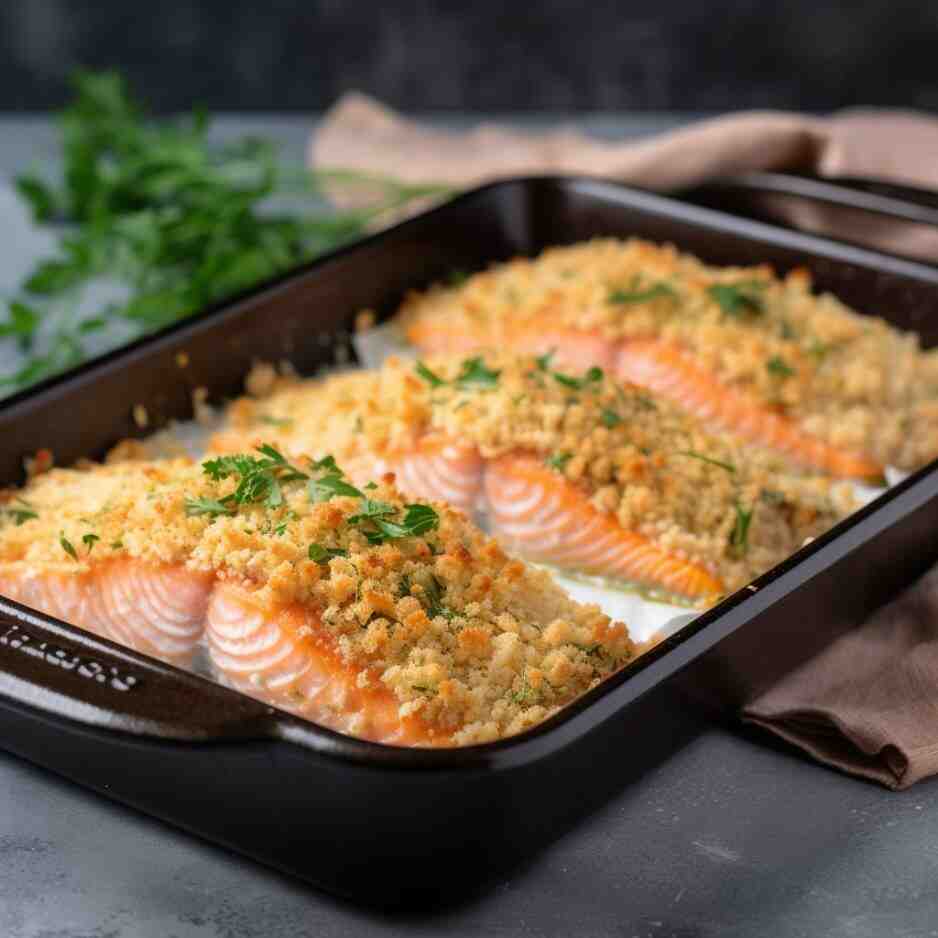
Baking salmon to the perfect internal temperature is a straightforward process. Here’s a step-by-step guide:
- Prep the Salmon: Preheat your oven to around 375°F (190°C). Choose fresh salmon fillets or steaks and pat them dry with a paper towel. Season the salmon with your preferred herbs, spices, and marinades.
- Use a Baking Dish: Place the seasoned salmon in a baking dish lined with parchment paper or lightly greased.
- Cooking Time: As a general guideline, calculate about 12-15 minutes of baking time per inch (2.54 cm) of salmon thickness. Keep in mind that the exact time may vary based on your oven’s accuracy and the thickness of the salmon.
- Internal Temperature: Insert a cooking thermometer into the thickest part of the salmon, ensuring it doesn’t touch the pan or bone. The target internal temperature is approximately 145°F (63°C).
- Bake and Monitor: Place the baking dish in the preheated oven and monitor the temperature closely as the salmon cooks.
- Check for Doneness: As the salmon approaches the target temperature, watch for changes in color and texture. The flesh should appear opaque and flake easily when tested with a fork.
- Remove from Heat Early: Remember that the salmon will continue to cook slightly after being removed from the oven due to residual heat. Therefore, take the salmon out of the oven just before it reaches the target temperature.
- Resting Time: Allow the salmon to rest for a few minutes. During this time, the juices will redistribute, resulting in a moist and flavorful final product.
- Serve and Enjoy: Once the salmon has rested, serve it immediately with your favorite sides and garnishes.
By following these steps and using a cooking thermometer to accurately measure the internal temperature, you can bake salmon to perfection. It will be cooked through, safe to eat, and still have that sought-after flaky texture and delicious flavor.
Grilled or Air Fried
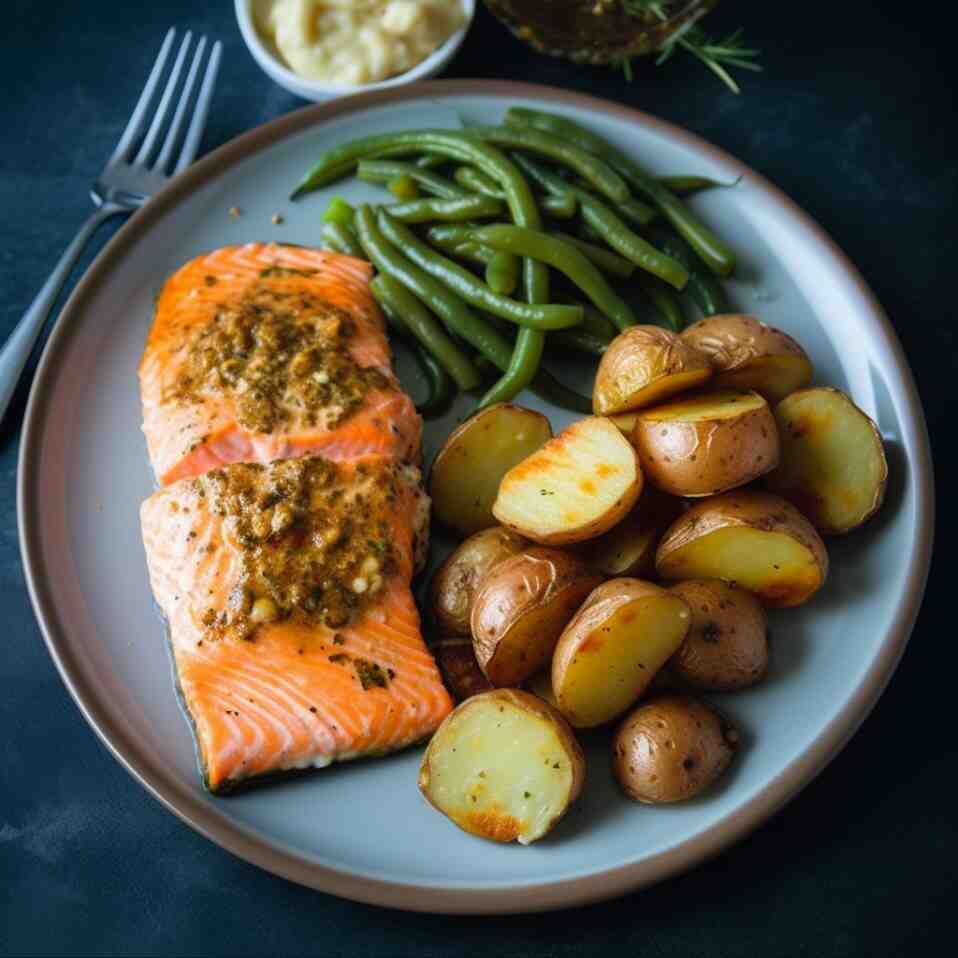
Grilling salmon to the perfect internal temperature involves careful timing and temperature control. Here’s a guide to help you achieve a perfectly cooked grilled salmon:
- Prep the Salmon: Start with fresh salmon fillets or steaks. Pat them dry with a paper towel. Season the salmon with your preferred marinades, spices, and herbs.
- Preheat the Grill: Preheat your grill to medium-high heat. Make sure the grates are clean and lightly oiled to prevent sticking.
- Cooking Time: Aim for approximately 4-6 minutes per half-inch (1.27 cm) of salmon thickness. Turn the salmon only once during cooking to avoid sticking and to promote even cooking.
- Internal Temperature: Insert a cooking thermometer into the thickest part of the salmon. The target internal temperature is around 145°F (63°C).
- Grill and Monitor: Place the salmon on the grill and close the lid. Monitor the temperature closely to prevent overcooking.
- Check for Doneness: As the salmon cooks, watch for changes in color and texture. The fish should become opaque and flake easily with a fork.
- Remove Early: Remember that the salmon will continue to cook slightly after being removed from the grill due to residual heat. Take it off the grill just before it reaches the target temperature.
- Resting Time: Let the salmon rest for a few minutes before serving. This resting period allows the juices to redistribute and ensures a moist final result.
- Serve and Enjoy: Once the salmon has rested, serve it immediately with your choice of sides and accompaniments.
By following these steps and using a cooking thermometer to monitor the internal temperature, you can grill salmon to perfection. Achieving the ideal balance between safe cooking and preserving the fish’s texture and flavor will result in a delicious and satisfying grilled salmon dish.
Simmering
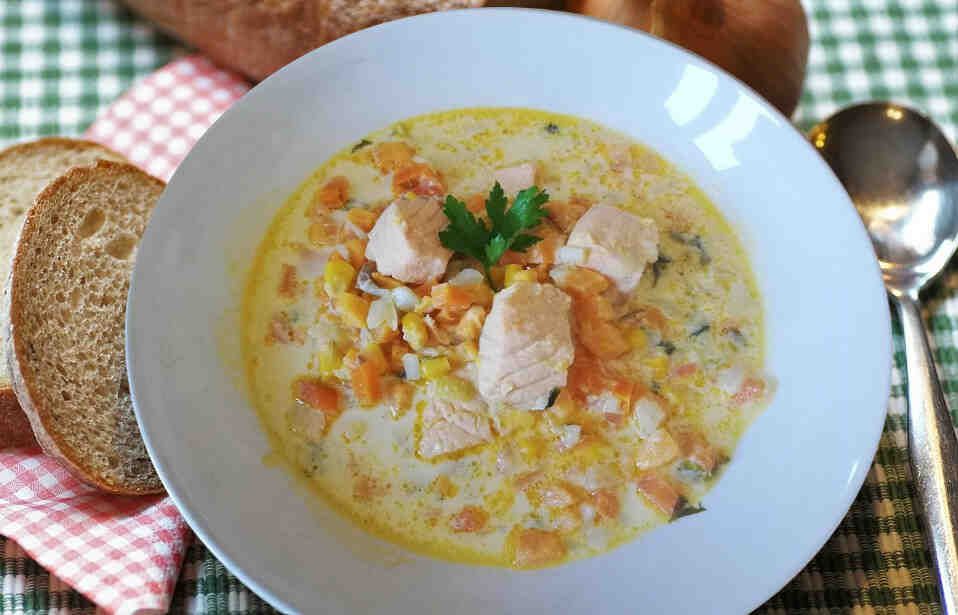
Simmering salmon is a gentle and precise cooking method that can result in tender and flavorful fish. To simmer salmon to the perfect internal temperature:
- Prep the Salmon: Start with fresh salmon fillets or steaks. Pat them dry with a paper towel. Season the salmon with your preferred herbs, spices, and marinades.
- Choose a Liquid: Select a flavorful liquid for simmering. It could be broth, wine, or a combination of aromatics and water.
- Simmering Temperature: Set the heat to low or medium-low, aiming to keep the liquid just below boiling. You should see gentle bubbles forming around the edges of the liquid.
- Use a Pan with Lid: Choose a pan with a lid that can accommodate the salmon fillets without overcrowding.
- Cooking Time: Simmer the salmon for about 8-10 minutes per inch (2.54 cm) of thickness.
- Internal Temperature: Insert a cooking thermometer into the thickest part of the salmon. The target internal temperature is around 145°F (63°C).
- Simmer and Monitor: Place the salmon fillets in the simmering liquid. Cover the pan with the lid and monitor the temperature closely to avoid overcooking.
- Check for Doneness: As the salmon cooks, observe the color and texture changes. The fish should become opaque and flake easily with a fork.
- Remove Early: Remember that the salmon will continue to cook slightly after being removed from the liquid due to residual heat. Take it out of the liquid just before it reaches the target temperature.
- Resting Time: Allow the salmon to rest for a few minutes. During this time, the juices will redistribute for a moist and succulent final result.
- Serve and Enjoy: Once the salmon has rested, serve it with the simmering liquid or your choice of sauces and sides.
By following these steps and using a cooking thermometer to ensure the salmon reaches the proper internal temperature, you can simmer salmon to perfection. This method results in tender and flavorful fish that’s cooked through and safe to eat.
Safety Considerations for Cooking Salmon
Cooking salmon safely involves several important considerations to prevent foodborne illnesses and ensure a delicious dining experience. Here are some safety considerations to keep in mind:
- Freshness: Start with fresh salmon. Choose fillets or steaks that have a firm texture, moist appearance, and a pleasant, mild smell. Avoid fish with an off-putting odor or signs of spoilage.
- Cross-Contamination: Prevent cross-contamination by thoroughly washing your hands, utensils, cutting boards, and surfaces that come into contact with raw salmon. This reduces the risk of spreading harmful bacteria to other foods.
- Thawing: If using frozen salmon, thaw it safely in the refrigerator or using the defrost function on your microwave. Avoid thawing at room temperature to prevent bacterial growth.
- Internal Temperature: Ensure that the internal temperature of the salmon reaches at least 145°F (63°C) at the thickest part. This temperature is considered safe to kill harmful bacteria, parasites, and pathogens that might be present in undercooked fish.
- Use a Cooking Thermometer: Invest in a reliable food thermometer to accurately measure the internal temperature of the salmon. This helps you avoid both undercooked and overcooked salmon.
- Handling Leftovers: Store any leftover cooked salmon in the refrigerator within two hours of cooking. Consume leftovers within 3-4 days. Reheat leftovers to an internal temperature of 165°F (74°C) to ensure they’re safe to eat.
- Avoid Cross-Contamination: Keep cooked salmon separate from raw ingredients to prevent cross-contamination. Use separate utensils and plates for raw and cooked foods.
- Marinades: If you’re using a marinade that has come into contact with raw salmon, do not use it as a sauce without first boiling it to kill any potential bacteria.
- Prevent Overcooking: While it’s important to ensure the salmon is fully cooked, overcooking can result in dry and less flavorful fish. Remove the salmon from heat just before it reaches the target temperature, as it will continue to cook slightly during resting.
- Serving: Serve the cooked salmon immediately after it has rested. Avoid leaving cooked salmon at room temperature for extended periods.
By following these safety considerations, you can enjoy the culinary pleasures of salmon while minimizing the risks associated with undercooked or mishandled food.

